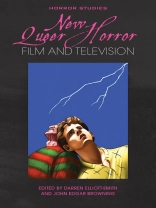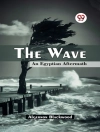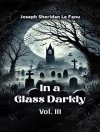This anthology comprises essays that study the form, aesthetics and representations of LGBTQ+ identities in an emerging sub-genre of film and television termed ‘New Queer Horror’. This sub-genre designates horror crafted by directors/producers who identify as gay, bi, queer or transgendered, or works like Jeepers Creepers (2001), Let the Right One In (2008), Hannibal (2013–15), or American Horror Story: Coven (2013–14), which feature homoerotic or explicitly homosexual narratives with ‘out’ LGBTQ+ characters. Unlike other studies, this anthology argues that New Queer Horror projects contemporary anxieties within LGBTQ+ subcultures onto its characters and into its narratives, building upon the previously figurative role of Queer monstrosity in the moving image. New Queer Horror thus highlights the limits of a metaphorical understanding of queerness in the horror film, in an age where its presence has become unambiguous. Ultimately, this anthology aims to show that in recent years New Queer Horror has turned the focus of fear on itself, on its own communities and subcultures.
Tabela de Conteúdo
List of Illustrations
Author Biographies
Introduction
Part 1: TRANSFORMING, RE-READING AND RE-MAKING QUEER HORROR
1: ‘My Brother’s Creeper’: Towards a Queer (Re-)Reading of Victor Salva’s Jeepers Creepers (2001) – John Edgar Browning
2: Queer Cult Performance: Recreating Rocky Horror in the Twenty-First Century – John Lynskey
3: Castrating the Queer Vampire in Let the Right One In (2009) and Let Me In (2010) – Darren Elliott-Smith
4: ‘Becoming Hannibal’: Identification and Transformation in Queer Horror Television – Ben Tyrer
Part 2: QUEER PLAYGROUNDS AND ADOLESCENT HORRORS
5: ‘What happened to my sweet girl?’: Paranoid and Reparative readings of Queer Subjectivity in Black Swan (2010) and Jack and Diane (2012) – Robyn Ollett
6: ‘A Dream Within a Dream’: Children’s ‘Horror’ Television and Lesbianism in the World of Marceline the Vampire Queen – Simon Bacon
7: Abjection, Queer Bodies and Grotesque Doppelgängers in Jack and Diane and The Nature of Nicholas – Fernando Gabriel Pagnoni Berns and Mariana Zárate
8: At the Edges of (queer) Time and Space: Atemporality, Adolescence, and Abjection in Final Destination – Christopher Clark
Part 3: BADASS WITCHES AND QUEER WOLVES
9: ‘If you look in the face of evil, evil’s gonna look right back at you’: Anthologising Supernatural Sexualities on American Horror Story: Coven – Andrew J. Owens.
10: Like and Lycanthropy: The New Pack Werewolf According to Tyler, Tyler and Taylor – Tim Stafford
11: ‘Unspeakable Acts’: Coming Out as Werewolf – Lisa Metherell.
12: ‘Sisters United’: Feminist Nostalgia, Queer Spectatorship, and the Radical Witch Politics of Rob Zombie’s The Lords of Salem – Ben Raphael Sher
Selected Bibliography
Sobre o autor
This book will appeal to undergraduate and postgraduate students of Gender Studies and LGBTQ studies, students of Film and TV studies – with an emphasis on considerations of genre tropes, representations of sexuality, gender and queerness in the moving image. Readers may also come from the aca-fan community – that is – community of LGBTQ+ fans of Horror that exists online, and in the media.












